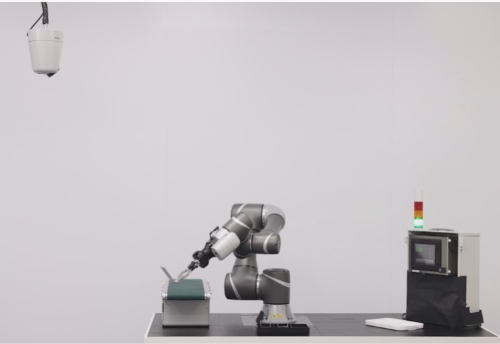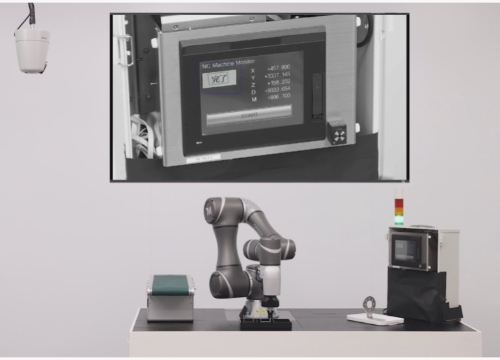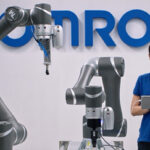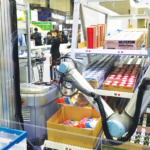ASIA ELECTRONICS INDUSTRYYOUR WINDOW TO SMART MANUFACTURING
OMRON Gives “Eyes” to Cobot’s Peripheral Device
OMRON Corporation will add Vision Edition-T image processing software from Canon Inc. to its “Plug & Play” peripheral devices that can be used easily with TM Series of collaborative robots. This combination of network cameras and software, set to begin in January, aims to create a new “eye” to peripheral devices.
The addition of the new eye to the collaborative robot will allow OMRON to expand automation solutions for inspection process at manufacturing sites. Thus, the company can contribute to the realization of flexible manufacturing site where humans and machines collaborate.

Cobots as Automation Tool
In addition to traditional issues, such as the shortage of manpower, the need for automation using collaborative robots is rapidly increasing at manufacturing sites as a countermeasure against the COVID-19 infection.
The field of view of the built-in camera on the collaborative robot is limited. In the inspection process, it has to rely on visual inspection by humans or installation of multiple external cameras for each inspection point. These additional man-hours and costs have been a barrier to the installation of automation for inspection processes.
Flexible Automation Solution
Since 2018, OMRON has been certifying peripheral devices that can be easily installed and configured on collaborative robots as “Plug & Play” devices. This aims to further accelerate the resolution of customer issues based on the unique concept of “Innovative-Automation”.
This time, Vision Edition-T image processing software from Canon, which can process images of a wide range captured using network camera functions, has been added to “Plug & Play”. By working with the built-in camera of OMRON’s collaborative robots, an automation solution that is more flexible to changeover in terms of types of products and tasks can be realized. Also, a built-in camera, which is one of OMRON’s collaborative robots strengths, enables the collaborative robot to automatically compensate for misalignment with the work location. This makes it possible to quickly and easily start up the collaborative robot in various work cells and make the collaborative robot according to the production plan.
OMRON will continue to expand its collaborative robot automation solutions to solve customers’ challenges and contribute to the realization of flexible manufacturing sites where people and robots work in harmony.
Case Studies of OMRON’s Cobot and Canon’s Software
Inspection
While the collaborative robot is working, the network camera can inspect products in parallel. It enables change over for the type of products and the inspection points easier and quicker.

Machine tending
The network camera recognizes the progress status of the processing machine when loading/unloading workpieces into/out of a machine tool by a collaborative robot. This process makes automation easy.

Features of OMRON’s Collaborative Robots
Built-in high-resolution camera to “see and recognize” for work
It has a 5 million-pixel built-in camera with a wide range of field of view and high resolution. The camera features reading 2D codes such as barcodes, QR codes, and DataMatrix codes; color identification; OCR. It can be used in various processes, such as inspection, measurement, sorting, and visual alignment.
The built-in camera reduces start-up time for operations using cameras
The coordinates of the built-in camera have been calibrated in advance to match the robot’s coordinates. This feature of the “TM Landmark” greatly reduces the time and effort required for “calibration” when relocating the robot in the field.




